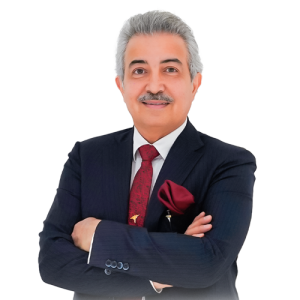Everything You Need to Know
Ear lobe correction, also known as earlobe repair, is a cosmetic surgical procedure designed to improve the appearance of earlobes that may have been stretched, torn, or otherwise damaged. This procedure can help restore the natural shape and symmetry of the earlobes, boosting a person’s confidence and self-esteem.
What Is Ear Lobe Correction?
Ear lobe correction involves surgical techniques to repair or reshape earlobes affected by various factors, such as heavy earrings, trauma, or congenital conditions. The procedure can address issues like elongated earlobes, split or torn earlobes, and earlobe asymmetry.
Reasons for Ear Lobe Correction
Individuals may seek ear lobe correction for several reasons, including:
- Stretching or Elongation: Prolonged use of heavy earrings can stretch the earlobes over time, leading to a sagging appearance.
- Tears or Cuts: Accidental injuries or trauma can result in split earlobes, which may be uncomfortable or unsightly.
- Birth Defects: Some individuals may have earlobes that are naturally malformed or asymmetrical.
- Aesthetic Preferences: Many people desire a more youthful or balanced appearance for their ears.
Benefits of Ear Lobe Correction
Ear lobe correction offers several benefits, including:
- Improved Aesthetic Appearance: The procedure restores a more natural shape and size to the earlobes, enhancing overall facial symmetry.
- Increased Comfort: Repairing torn or stretched earlobes can alleviate discomfort associated with wearing earrings.
- Boost in Confidence: Many individuals feel more self-assured after undergoing ear lobe correction, allowing them to wear earrings and show off their ears without embarrassment.
Types of Ear Lobe Correction Procedures
There are a few common techniques used for ear lobe correction, including:
- Simple Lobe Repair: For minor tears or splits, a simple surgical technique can be employed. The surgeon removes any damaged tissue, and the earlobe is sewn back together, typically with dissolvable sutures.
- Surgical Reshaping: If the earlobe is elongated or misshapen, the surgeon may reshape the lobe to achieve a more pleasing contour. This may involve removing excess skin and repositioning the remaining tissue.
- Lobe Reconstruction: In cases of significant damage, such as large holes from gauge earrings or severe trauma, a more complex reconstructive approach may be required. This can involve grafting tissue from another part of the body or using synthetic materials.
Who Is a Candidate for Ear Lobe Correction?
Ideal candidates for ear lobe correction typically:
- Have noticeable earlobe damage or deformity.
- Are in good overall health and have realistic expectations about the outcome.
- Are free from any active infections or medical conditions that could complicate surgery.
A thorough consultation with a qualified plastic surgeon is essential to determine candidacy and discuss available options.
The Ear Lobe Correction Process: What to Expect
1. Consultation
The process begins with a consultation where you will discuss your concerns, desired results, and medical history with a board-certified plastic surgeon. The surgeon will evaluate your earlobes and recommend the best course of action.
2. Preparation
Before surgery, you may receive specific instructions on preparing for the procedure, such as avoiding blood-thinning medications and alcohol for a few days prior.
3. Surgery
Ear lobe correction is typically performed under local anesthesia and may take 30 minutes to an hour. Key steps include:
- Incision: The surgeon makes an incision along the edge of the earlobe, removing any damaged tissue as needed.
- Suturing: The earlobe is then carefully stitched back together using fine sutures to minimize scarring.
4. Recovery
Recovery from ear lobe correction generally involves:
- Post-Operative Care: Expect some swelling and tenderness in the area, which can be managed with over-the-counter pain relievers. Keeping the area clean and dry is essential for optimal healing.
- Activity Restrictions: Avoid wearing earrings or engaging in strenuous activities for a few weeks to allow the earlobes to heal properly.
- Follow-Up Appointments: You will likely have follow-up appointments to monitor your healing progress and remove sutures if they are not dissolvable.
5. Results
The final results of ear lobe correction will become more apparent as swelling subsides. Most individuals can enjoy improved earlobe appearance and function.
Risks and Complications
While ear lobe correction is generally safe, potential risks include:
- Infection: Following proper aftercare can help minimize the risk of infection.
- Scarring: All surgical procedures leave scars, but skilled surgeons aim to minimize their visibility.
- Asymmetry: In rare cases, the earlobes may heal asymmetrically, requiring further correction.
Alternatives to Ear Lobe Correction
For those considering alternatives to surgery, options include:
- Earring Alternatives: Using lighter earrings or clip-on options to prevent further stretching.
- Non-Surgical Treatments: Some topical treatments or fillers may offer temporary improvements, but they do not provide a permanent solution.



